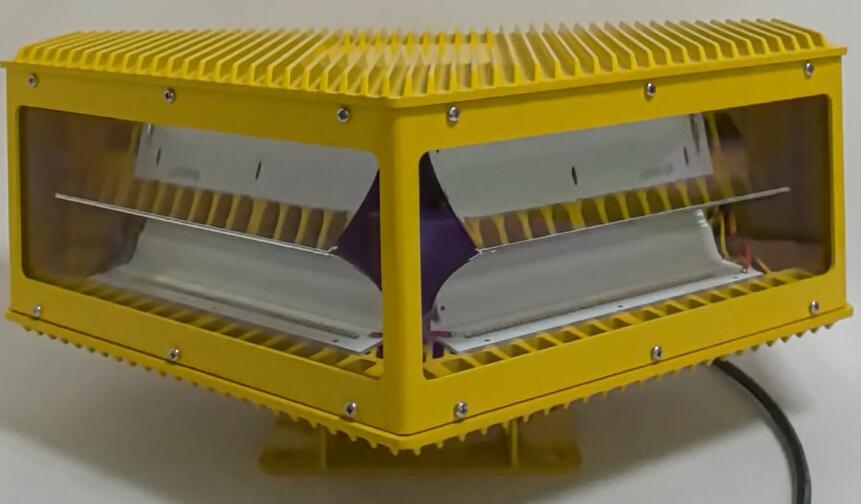Aviation Lamp for Chimney A Beacon of Safety and Efficiency
In industrial applications, particularly those involving high-rise chimneys, safety and visibility are paramount. The aviation lamp for chimney structures plays a vital role in ensuring both. These specialized lights are not just functional but also serve as essential safety tools for industries, aviation, and surrounding communities. This article explores their significance, operational features, and advantages, shedding light on why they are indispensable in modern industrial settings.
Purpose of Aviation Lamps for Chimneys
Aviation lamps for chimneys are primarily designed to ensure that tall structures, such as industrial chimneys, cooling towers, and smokestacks, remain visible to aircraft, especially in low-visibility conditions like nighttime or fog. Without such lamps, these towering structures could pose serious risks to aviation safety. By marking the height and position of chimneys, these lamps significantly reduce the likelihood of collisions, safeguarding lives and property.
Key Features of Aviation Lamps for Chimneys
Durability: Aviation lamps for chimneys are built to withstand harsh environmental conditions, such as high winds, extreme temperatures, and heavy rain. Their robust construction ensures long-term performance with minimal maintenance.
Energy Efficiency: Modern aviation lamps often use LED technology, offering bright illumination while consuming less power. This energy efficiency is particularly advantageous for industries looking to minimize operating costs and carbon footprints.
High Visibility: These lamps emit intense, steady, or flashing light, ensuring visibility from long distances. The light color, typically red or white, complies with aviation safety standards to enhance recognition.

Weather Resistance: The materials used in aviation lamps are often corrosion-resistant, making them ideal for chimneys exposed to pollutants and chemicals.
Automation: Many aviation lamps are equipped with photocells or timers, enabling automatic operation during low-light conditions, thereby reducing manual intervention.
Installation Considerations
Installing an aviation lamp for chimney structures involves meticulous planning to ensure compliance with regulatory standards and optimal functionality. Key considerations include:
Height and Placement: The lamp must be installed at specific intervals along the chimney to provide clear visibility to approaching aircraft.
| Aviation lamps for chimneys | DCF56 |
Power Source: Solar-powered lamps are gaining popularity for their eco-friendly and cost-effective nature. Traditional electric-powered options, however, remain widely used.
Maintenance Access: Chimneys are challenging structures to access. Therefore, aviation lamps should be installed in a manner that allows for safe and convenient maintenance.
Benefits Beyond Safety
While the primary purpose of aviation lamps for chimneys is safety, they offer additional advantages that benefit industries and communities alike:
Compliance with Regulations: Aviation authorities worldwide mandate the use of such lamps for tall structures. Installing aviation lamps ensures adherence to these legal requirements, avoiding penalties.
Enhanced Industrial Operations: Clear marking of chimneys improves overall site management and coordination, particularly in complex industrial environments.
Eco-friendly Solutions: With the advent of solar-powered aviation lamps, industries can now adopt sustainable lighting solutions that align with environmental goals.
Innovations in Aviation Lamp Technology
Advancements in technology have significantly improved the performance and efficiency of aviation lamps for chimneys. Some notable innovations include:
Smart Lighting Systems: Integrated sensors and IoT technology enable remote monitoring and control of aviation lamps, ensuring timely maintenance and optimal performance.
Dual Lighting Modes: Certain lamps offer dual lighting modes (steady and flashing) to adapt to varying visibility requirements.
Improved LEDs: Modern LEDs provide brighter illumination with extended lifespans, reducing the need for frequent replacements.
Choosing the Right Aviation Lamp for Chimneys
Selecting an appropriate aviation lamp depends on several factors, including chimney height, environmental conditions, and budget constraints. Here are some tips:
Check Compliance: Ensure the lamp meets local and international aviation safety standards.
Assess Durability: Opt for lamps designed for the specific challenges of industrial chimneys, such as exposure to pollutants or extreme temperatures.
Consider Energy Efficiency: LED or solar-powered options are ideal for long-term savings.
Evaluate Warranty and Support: A reliable manufacturer should provide comprehensive warranties and technical support for the lamps.
Case Studies: Success Stories with Aviation Lamps for Chimneys
Several industries have successfully enhanced safety and efficiency with the use of aviation lamps:
Chemical Plants: A large chemical factory in Asia installed aviation lamps for its chimneys, reducing the risk of aviation incidents while meeting strict regulatory standards.
Power Stations: A coal-fired power station adopted solar-powered aviation lamps, achieving significant energy savings and environmental benefits.
Urban Development Projects: In densely populated cities, marked chimneys enhance urban safety, demonstrating the importance of aviation lamps in public spaces.
The Future of Aviation Lamps for Chimneys
As industries evolve, the role of aviation lamps for chimneys is likely to expand. Upcoming trends may include:
Enhanced Solar Technology: With improved photovoltaic cells, solar-powered aviation lamps will become even more reliable and efficient.
AI-driven Monitoring: Artificial intelligence could revolutionize maintenance by predicting failures and optimizing lamp performance.
Eco-friendly Designs: Biodegradable materials and recyclable components may dominate the manufacturing process, aligning with global sustainability goals.
The aviation lamp for chimney structures represents a critical intersection of safety, technology, and efficiency. These lights are not merely functional; they are vital to the smooth operation of industries and the safety of airspace. As technology advances, the capabilities and benefits of aviation lamps will continue to grow, making them an indispensable feature of industrial landscapes worldwide.
By investing in high-quality aviation lamps, industries can enhance safety, meet regulatory requirements, and contribute to a sustainable future.
